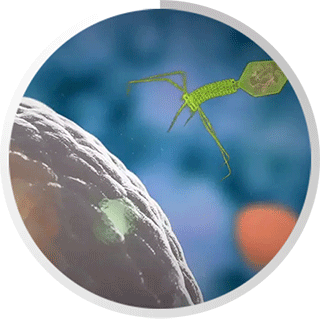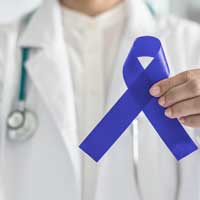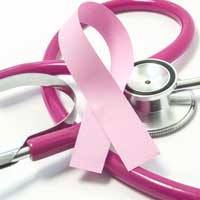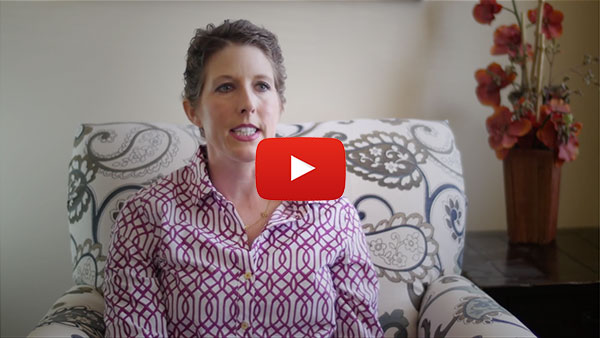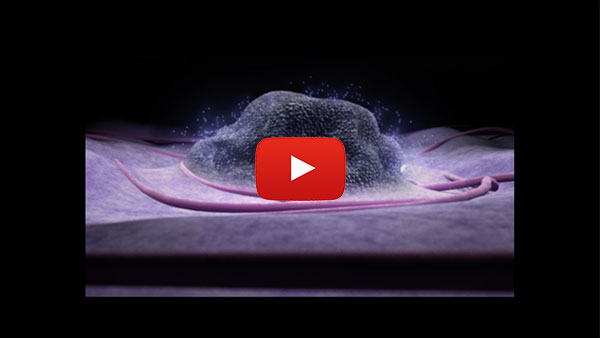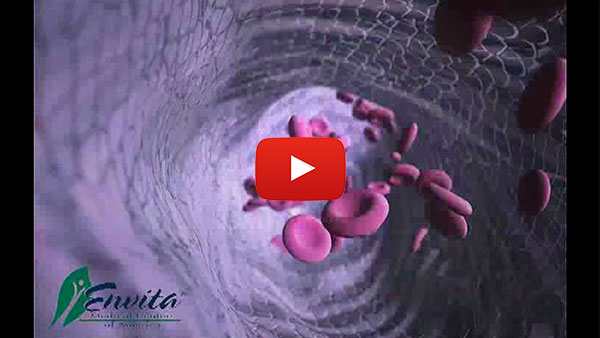How To Overcome Unfavorable Cancer Statistics

A large number of cancer and Stage 4 cancer patients will look at statistical outcomes when choosing the optimal treatment facility, but as you will learn, statistics can be misleading. This article goes far beyond the numbers, giving patients a deeper understanding of how to properly evaluate their options and statistically improve their cancer outcomes.
Our decade plus experience working with advanced and Stage 4 cancer's most complex cases provides you with an ideal physician-direct perspective, comparing both conventional and alternative cancer Center, ultimately determining which is best for you. Our approach concentrates on selecting the therapies and treatments that regularly provide statistical and biological advantages for patients suffering with various cancer types.
Cancer Treatment Statistics Can Be Deceiving
There are many reasons why "statistically significant" doesn't necessarily mean improvement in your condition or life. One must first determine whether the correct factors are being examined in the provided survival data. For example, is the "response rate" offered for a specific cancer type's treatment regimen short-lived or sustained with significant improvement in quality of life?
The real problem is that many of these cancer treatment "responses" can often be temporary, or even fleeting. Even among patients with cancers of identical stage and type can often have different response rates based on the behavior and genetic variations of each tumor. This is an important thought to consider, as it touches on the model specifically used by cancer hospitals and drug companies. As you can tell, however, it comes with significant flaws.
The notion that response rates are deceiving closely mirrors a more fundamental problem with cancer statistics as a whole. Instead, Envita Medical Centers makes survival and overall quality of life for patients our most important measures of success.
Examples of Statistical Problems with Cancer Treatments
Here is an example to demonstrate some of the problems with a "statistics-based" response to cancer treatment:
Treatment Protocol 1 (TP1) has a 35 percent rate of response while Treatment Protocol 2 (TP2) has a 75 percent rate. However, if we find TP2 is short-lived, it certainly does not mean that it is a better treatment protocol. Moreover, if TP2 is far more toxic than TP1, it is likely that the quality of life for TP2 patients will be considerably lower.
These data manipulation games tell only half the story and are often played by pharmaceutical companies and cancer Center to bring patients in. Other cancer Center have adopted the approach of implementing "special criteria" to skew their results. For example, their data information may state "patients that completed our protocol." This is an indication that unscrupulous tactics were implemented to create exclusionary criteria, thereby diminishing undesirable outcomes and "appearing better" at first glance.
Statistics are regularly manipulated in numerous ways. It is not uncommon to see organizations show enhanced results by including tricky (or concealing relevant) survival data. Without specific calculation criteria, results are unreliable at best, making such criteria absolutely critical for objective comparison. Keep in mind, if it looks too good to be true, it likely is.
Statistics That Matter - Patients Can Improve Their Statistics And Save Their Lives
In our experience, what patients are seriously asking for is the best treatments available to help them find remission, achieve a cure and live. That pretty much is the bottom line.
So, exercise caution with the statistical data and white papers that you read. We have found that no matter how large or small the organization, the data provided by medical groups can be somewhat deceiving and likely far more convoluted then they appear, particularly those sources made available online.
It is important to systematically consider both conventional and alternative medicine and discuss the true "game changers" that may statistically and significantly help you to achieve your goal.
Remember, cancer is individualized and cannot be neatly ushered into broad categories of type and stage. This misdirected attitude can be seen in the latest treatments for cancer being administered around the world. Genetic and personalized immunotherapies are beginning to replace the one size fits all models – because their results are superior.
Why is this true? Because every patient is different, including their respective cancer's causative agents, their tumor's specific metabolism, and even the way the patient handles side effects. There is no question that the future of cancer treatment is personalization, and we are leading the way.
Statistics Show that Conventional Cancer Treatment Center have the Worst SEER Scores
There is a lot of fear surrounding cancer treatment. Much of this stigma comes from poor results, standardized treatment plans, abysmal side effects, no customization, disease recurrence and of course, the loss of life. A major fault of traditional cancer treatment is its singular focus on tumor "response" or shrinkage. In fact, research has shown "response" does not necessarily correlate to increased survival time in adults. When we hear that a traditional cancer treatment has had a 20% or 30% success rate with late-stage cancer, in actuality that means patients have only experienced a 20-30% "response" rate, or tumor shrinkage. This statistically has little or nothing to do with the patients' quality of life or survival time. In our opinion, this misconception is largely responsible for the poor results found in the National Cancer Institute's Surveillance, Epidemiology, and End Results Program (SEER) database report. The SEER web site can be accessed at seer.cancer.gov.
A Deeper Look at SEER Trends in Conventional Cancer Center
Some cancer Center are posting how "their results are better" than the conventional system or SEER numbers. That is not hard to do, particularly as it applies to late stage or Stage 4 cancers.
Doctors Faguet and Morgan* have clearly demonstrated that chemotherapy is only 2% effective in the treatment of late-stage and Stage 4 cancer, for a 5-year survival period or better. For this reason, most Center do not dare report beyond 2-3 years, let alone 5, beyond initial diagnosis – quite simply, the results are not going to be in their favor.
Just to provide some perspective, our typical patient is entering our medical center 2-3 years after initial diagnosis and is often refractory to conventional and many times refractory to several alternative therapies. For this reason, we are qualified to point out the certain treatments that are statistically more successful for patients. It is our contention that the sooner patients incorporate them into their treatment plans, the more likely the chance for exponential improvements to manifest beyond statistical expectations. Hereto forth, all data discussed will be for Stage 4 cancers.
Please note that the percentages provided in the following chapters are estimates (approximates) and not exact, as each patient is different and may not respond to a particular conventional or alternative treatment. Additionally, it should be understood that various details also impact the improvements to survival outcomes and patient quality of life. The purpose of this article is not to cover every treatment offered, but rather provide some important examples to give clear perspective as well as some definitive bearings by which to assist throughout the information gathering process.
Part 1: Conventional Chemotherapy
Outperforming SEER Numbers Through Enhanced Conventional Treatments with Chemotherapy: 75% Improvement for Most Cancers
We pride ourselves on providing state-of-the-art conventional and advanced alternative medicine for cancer – what we call "integrative" medicine. Two of the most common conventional therapies are chemo and radio (radiation.)
Second Method to Outperform SEER Numbers with Chemotherapy
Chemotherapy is widely used by the biggest and most well-recognized hospitals as a staple for cancer treatments. However, the protocols they follow are derived from large group averages. The resulting problem with this model is that our genetic and molecular testing on Stage 4 cancer shows that 75% of patients were clearly administered the wrong chemotherapy – one wholly ineffective for their specific cancer genetics and metabolism.
As a result, these patients suffer needlessly with heavy side effects, compromised quality of life, and substandard results, all while their statistics of survival spiral downward. Moreover, these patients were likely being reassured, all the while, that their chemotherapy was working (at least in the short-term) or having a "response." Really all the treatment had rendered was making the cancer and tumor more resistant.
By correctly utilizing our comprehensive strategy and implementing genetic and molecular profiling, we immediately see major improvements in drug choices and a quantum leap toward superior, long-term effectiveness. To what degree? Roughly a 40% boost to statistics across the board.
We envision a future where this will be the only method by which chemotherapy will be administered. In the meantime, while pharmaceutical companies and politics have a stronghold, we will continue to see this business machine satisfied to sell huge quantities of ineffective drugs for Stage 4 cancers, maintaining the game of large protocols as the standard.
40% Average Specificity Increase with Genetic and Molecular Profiling
The second major problem with chemotherapy comes part and parcel with the all-too-typical practice of immediately administering large doses, rather than the more practical and effective technique calling for low micro doses using insulin potentiation. By directly targeting the specific cancer cells in such a manner, it is possible to achieve maximum benefit while minimizing side effects. Our proprietary technique, GTFC™ (genetically targeted fractioned chemotherapy), pairs molecular genetic testing and the cancer cells sugar metabolism by targeting them directly.
The end result is far fewer side effects coupled with a considerably higher quality of life and a greatly enhanced opportunity for long-term survival.
GTFC™ Can Provide 75% Improvement in Quality of Life and Survival Time for Stage 4 Cancer Patients
GTFC™ can provide a 75% overall average improvement over the SEER report for Stage 4 cancers, starting 3 years after initial diagnosis. At Envita, we customarily receive patients from 2-3 years, post-diagnosis, as most are channeled through standard methods until they have personally recognized them to be unsatisfactory.
Part 2: Conventional Radiation Treatment
Outperforming SEER Numbers By 75-80% with the Newest in Conventional Radiation Treatment
Generally speaking, radiation treatment tends to be the most misunderstood therapy treatment. Lack of understanding contributes to poor cancer patient statistics at all stages. There are two main areas to understand with radiation:
- Radiation therapy is often improperly prescribed because the surgeon or other care provider uses their own treatment method, oftentimes one that is cancer approved, but not necessarily ideal for the patient. Consider, for a moment, a scenario where a prostate cancer patient would be prescribed robotic surgery or radiation seed therapy when, in fact, (if size and location are appropriate) they would respond far better to cyber knife radiation. This non-invasive technique could provide life-changing results and be done with no downtime or side effects.
If patients were not made aware of all their options they would likely have been faced with the standard several weeks of downtime and recovery that comes with the robotic surgery, including the plausibility of uncomfortable complications. Moreover, this was only an example of an obvious, early stage cancer with many possibilities for remission. Imagine the outcome if all options were not weighed in a case of Stage 4 cancer planning – it could be far worse than the extra several weeks of recovery and discomfort. In fact, it could prove lethal.
It should also be pointed out about the above example, that cyber knife decreases the chance of metastasis due to the absence of surgical removal. As radiation technology improves dramatically, the key is to target the tumor(s) without administering too much whole-body radiation while keeping the immune system intact. When used correctly, extension of life and its quality therewith, can dramatically change a Stage 4 statistic – particularly when combined with targeted immunotherapy. We have seen such methodology bring about remissions, even in late-stage disease.
- Radiation can be an expensive proposition for a hospital or cancer groups. If they own the equipment and a billing code, they will use it. This therapy type is among the most profitable for cancer hospitals and it was estimated that one heavily-marketed cancer Center bills as much as $600 million every 6 months in tomotherapy alone.
However, just because a hospital owns a particular machine or device, does not necessarily mean it is ideal for a given patient's condition. Rather, what we see instead are patients being administered treatments without being provided superior options that may very well be available. It is indisputable that the wrong radiation can cause extreme side effects and a significant decline in immune function. In Stage 4 cancer, that can be devastating.
We have top radiation oncology consultants, and access to all the latest technology in targeted, next-generation, radiation therapy including tomothearpy, cyber knife, and proton beam without being fiscally over-stressed. That provides us the luxury of putting patients first, and having the ability to incorporate properly-timed immunotherapy to improve results.
Should radiation be considered at Envita? It is done with definitive plans to stop tumors quickly with the lowest possible total body doses, thereby leaving the immune system intact. In the past, we have helped many patients avoid surgery in early disease stages while decreasing the risk of metastasis and serious side effects. The precision of modern-day equipment is accurate within 1mm and with virtually no collateral damage.
We implement a truly integrative and advanced approach to cancer treatment. Correct combinations are critical to helping patients improve their overall outcomes.
A Look at Improving the Statistical Outcomes with Alternative Cancer Center
Our alternative medicine methods and treatments can make all the difference in the world, improving statistics across the board. We can help you evaluate what is best for your specific condition.
So what is truly the best way to compare alternative cancer Center beyond relying upon easily skewed statistics? To begin, it is wise to determine if their focus is committed to improving quality of life and survival for their patients.
Vitamin C and Ozone Therapy as Cancer Treatments can Increase Statistics Up to 70% Life Quality and 50% Survival Time
Oxidative therapies should be staples in the treatment of many cancers. However, only alternative medical Center across the globe take advantage of them. Vitamin C works on many levels as a natural form of chemotherapy and, when aided with ozone, can really improve the action on other conventional treatments by increasing reactive oxygen species.
To learn more about these therapies, please visit our peer-reviewed vitamin C and ozone articles.
Overview - Why Vitamin C Oxidative Therapies Aren't Always Effective
We offer our own speed drip technology and sustained-release intravenous Vitamin C delivery, which has been demonstrated to significantly outperform all others. One treatment is roughly four times more therapeutic.
However, there are several reasons that oxidative therapy might not work on all patients, at least initially. Some tumors produce larger amounts of enzyme catalase, preventing the beneficial oxidizing effect of hydrogen peroxide produced by high-dose Vitamin C. This can widely be remedied by initially administering ozone therapy, thereby increasing Vitamin C efficacy.
The other problem that stands in the way of oxidative therapy results stems from not having enough oxygen outside the cell for the Vitamin C to produce toxic hydrogen peroxide on the tumor. Again, by using ozone properly, prior to the Vitamin C dosing, this obstacle may be corrected. With this approach, it is possible for some patients to realize and maintain remission.
Judging the Many Different Cancer Center by the Effectiveness of their Treatments
You need not look further than the treatments offered at a center (and the scope and range of their doctors) to determine why they may (or may not) get desirable results. Once you have, you are better able to evaluate your options.
Chemotherapy Sensitivity Screening and Target Radiation
Treatments provided by hospitals and cancer Center that do heavy advertising are usually limited to their own equipment. They may own old or new, but will use them liberally, as long as they have their own billing codes.
We provide patients with a full spectrum of options, the very best available. We personalize and tailor your treatment to help you and even work to limit chemotherapy and radiation, administering only when needed, as there are many other tools available to enhance results. In simple terms, we are the alternative medicine experts.
Other Alternative Therapies Being Researched
Most alternative Center offer a high-dose Vitamin C treatment to their patients. Some may also administer ozone therapy, depending on their state and licensure. Those are always good to see from the start.
However, during your search, you may run across things like mistletoe treatment, Resveratrol treatment, Sodium Bicarbonate treatments, and a myriad of supplements and teas. And while many of these therapies mentioned may have their place with correct application and setting, ultimately not one of them has been a hit cure or wonder.
Since we have been exposed to such a large number of different therapies, we are confident that our personalized approach of combining idyllic treatment combinations with passionate doctors is the key to achieving significant results and really moving the statistics in your favor.
Deeper Look at Alternative Medicine Cancer Treatment Center with Immunotherapy
A shrewd way to evaluate alternative cancer treatment Center is by determining the level of immunotherapy available at each given center. Here is a solid explanation of immunotherapies different levels that may be applied to such comparative analysis.
- Entry Level immunotherapy - This is seen at most naturopathic medical practices, chiropractor offices, acupuncturist operations and health food stores and is most easily recognized by the administering of immune system building oral supplements, nutrition and teas. The level of background in cancer immunotherapy can vary greatly among these providers. Nevertheless, you will find that entry level is what is most often used in combination with chemotherapy and radiation. While it does have some positive effects, it is typically offered by larger cancer Center to demonstrate that they are "open minded" while remaining focused on pharmaceutical-based solutions.
- Middle Level immunotherapy - Administers forms of immunotherapy like intravenous high-dose Vitamin C for cancer patients. Iscador, mistle toe, Resveratrol, Sodium Bicarbonate and other homeopathic botanicals may also be included in their treatment protocols. By and large, middle level is provided by naturopathic doctors in some states, as well as by some more open-minded MD's and DO's. Oftentimes, these middle level practices will offer some entry-level methods as well.
- High Level immunotherapy - Aims to potentiate various forms of chemotherapy via immunotherapy. Their providers (DO's or MD's) carry the licensure necessary to practice these methods and will likely integrate all methodologies mentioned above. Their goal is to target cancer cells while working to get the immune system functioning at a high level.
- Highest Level immunotherapy - This method refers directly to the science of building vaccines derived from the patient's own immune system to fight cancer. Cellular-based immunotherapy extracts white blood cells and expands them to more effectively battle the disease. This is akin to an "immune system transplant" of sorts and originated some 25 years ago with cytotoxic T cells. The science and methodology of this highest level continue to advance rapidly and are greatly available in countries outside the United States. That being said, a newly approved drug has just been accepted in the United States for Stage 4 prostate cancer patients.
- Next Generation Immunotherapy - This is a Cellular-based immunotherapy founded upon genetic manipulation.
All methods of immunotherapy are currently offered at our international medical center in Hermosillo, Mexico. And with those therapies we have the experience and training to determine ideal combinations in case-by-case scenarios.
What Most Oncologists Consider to be Immunotherapy and the Important Alternatives they Tend to Ignore
Cell-based immunotherapy is typically recognized domestically when a drug trial is being sponsored. By and large however, the science is typically ignored. While cytokines are referenced, conventional treatment Center continually leave them out of cancer protocols. It seems that conventional oncologists worry that their patient will be taken off normal chemotherapy treatments for an unproven alternative. This unfounded fear stands in the way of most patients fully engaging in the best treatment plan possible to fight their disease.
Stacking the Statistics in your Favor; Natural Killer Cells Treatment and Technology
The proprietary natural killer cell cancer vaccine, AAIT, is a highly efficacious treatment, providing a uniquely targeted way to fight cancer – in particular, metastatic disease. You can learn more about AAIT on Envita's AAIT Cancer Vaccine page.
Please note, our international Center provide numerous treatments not yet available in the U.S.
The Real Goal in any Cancer Treatment is Long-Term Remission
Most of us continue to grow more savvy and aware as we are faced with an endless barrage of marketing and advertising campaigns to lure us to a myriad of products and services. For some reason, when we think of the medical industry, we tend to assume that they are above such practices of miscommunication and manipulation.
However, when there are billions of dollars at stake, corners are cut and data is often manipulated. Sure, we agree that doctors strive to serve their patients, but that doesn't mean that the institution that writes their check isn't at completely motivated by the almighty dollar, something that can corrupt and contaminate the environment of care.
In other words, do not be fooled. Your life is far too valuable.
In conventional cancer treatment models, "wait and see" has become a far too common approach. After treatment is administered, patients wait to see how or even if their bodies respond to treatment and how long the effects will last.
Oncologists use the term "remission" and not "cure," because it is unknown whether the cancer will come back later. There still may be cancer cells left in the body, even though there is no sign of it at the time. These cancer cells, which can break out of dormancy, often account for the recurrence of disease.
At Envita, we wish to build the best personalized treatment plan for you or your loved ones' cancer by using the most targeted and comprehensive approaches from around the world.
No matter what route you chose, we want to personally welcome you to Envita Medical Centers and let you know we are here for you as the uncontested leaders in personalized cancer treatment. We aim to continually set the bar for improving cancer statistics – one patient at a time.

